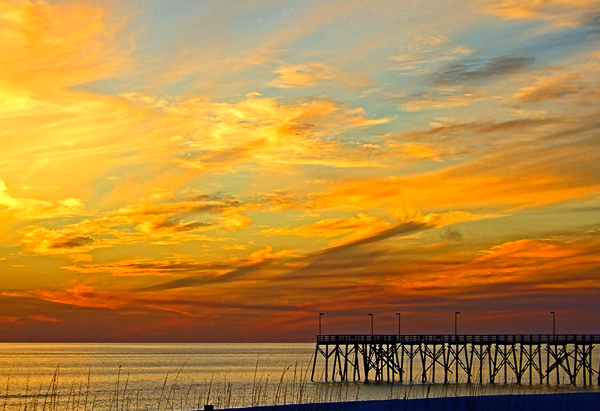Has HDR Gone Too Far?

When was the last time you looked at an HDR photograph and thought, “wow, that’s just how it looked when I was there!”?
If you’ve read this far, you’re probably a photographer who loves HDR. In case you’re not familiar with this wildly popular photography post-processing phenom, here’s what it is and what it looks like when it goes wrong and how to do it and how to do it on your iPhone and who practices it well. So I’ll ask again, has HDR gone too far?
Did your (very) human eye see the scene you photographed and post-processed the way your HDR image looks? Not likely. The human eye doesn’t see extreme detail in the distance, and it doesn’t see heightened elaborate color in the middle ground, and even in the near ground, the human eye misses a lot. Have you post-processed your ordinary photograph into something that looks dynamic and dramatic, but completely misses the point of what you really, truly, experienced if you had been aware when you were there? TWEET THIS
Nature offers us so much to behold, without extraordinary optical tricks. Offering viewers a post-processed world of so-called “high dynamic range,” while trendy and buzzworthy, belittles the experience we can have one-on-one with what we see through the viewfinder, and what we, as imagemakers, can share with those who aren’t there. HDR is false, it’s fake, and it’s not real. It’s cool, it’s trendy, it’s dazzling and engaging, it’s a moneymaker for its apostles, but it is most definitely not the decisive moment for which we admire Henri Cartier-Bresson, who worked without the gadgets and the high-tech attractions of today’s post-processing world, and who inspired so many of us to pursue the truth in photography in the first place. ♣
What do you think about HDR? I’m a fan of Lightroom, formerly a fan of Photoshop, so no stranger to post-processing—you can see how I post-process my photographs without HDR at my Art + Photo Shop.



Nope. Just do not like HDR. it is not real, not what my eyes saw when I took the photo, nor what the camera saw. Like so much else in this world, it is over hyped…. If a little bit of processing is good, then a whole lot more is better. I use it for Instagram at times; that’s where I play and have silly fun with photos.
Over hyped, that’s a good point. Nice to know I’m not the only one who feels it’s false. Thanks for your thoughts.
Hi Jann,
Interesting article. HDR is useful when the dynamic range exceeds that of the camera. From what I could tell from your article, you dislike tone mapping that can make some images look like you’ve just vomited a packet a crayola crayons. In this case, they are no longer photos.
I found this example here – http://www.reddit.com/r/shittyhdr
(sorry about the vulgar title).
I admit that I do like some of it (I actually prefer B/W photography) when it is done tastefully. This 500px link –
http://500px.com/HDRinstant
Will look forward to reading some more of your stuff.
Thanks for some additional insights on approaching HDR, and avoiding crayons vomit (nice image) and the links. Tastefully done, yes, it’s appealing, but if it tries too hard, I get a funny taste in my mouth about its reality. Photojournalists like David and Peter Turnley, Landscape photographers like Elliott Porter, and the thousands like them, float my boat.
HDR has its place the same as Bokeh, tilt shift and selective colouring. With all of these processes there is a time and a place. THe issue is that people think that to make a good image the technique needs to be applied with a heavy hand or don’t experiment and just use presets available.
Of course, you’re right, but lately there’s way too much HDR fanfare and it’s the most likely of all of those techniques to be passed off as reality (when well done) and to be abused (as one commenter described it, like crayola vomit). I’m over it. Thanks for commenting, will check out your blog!